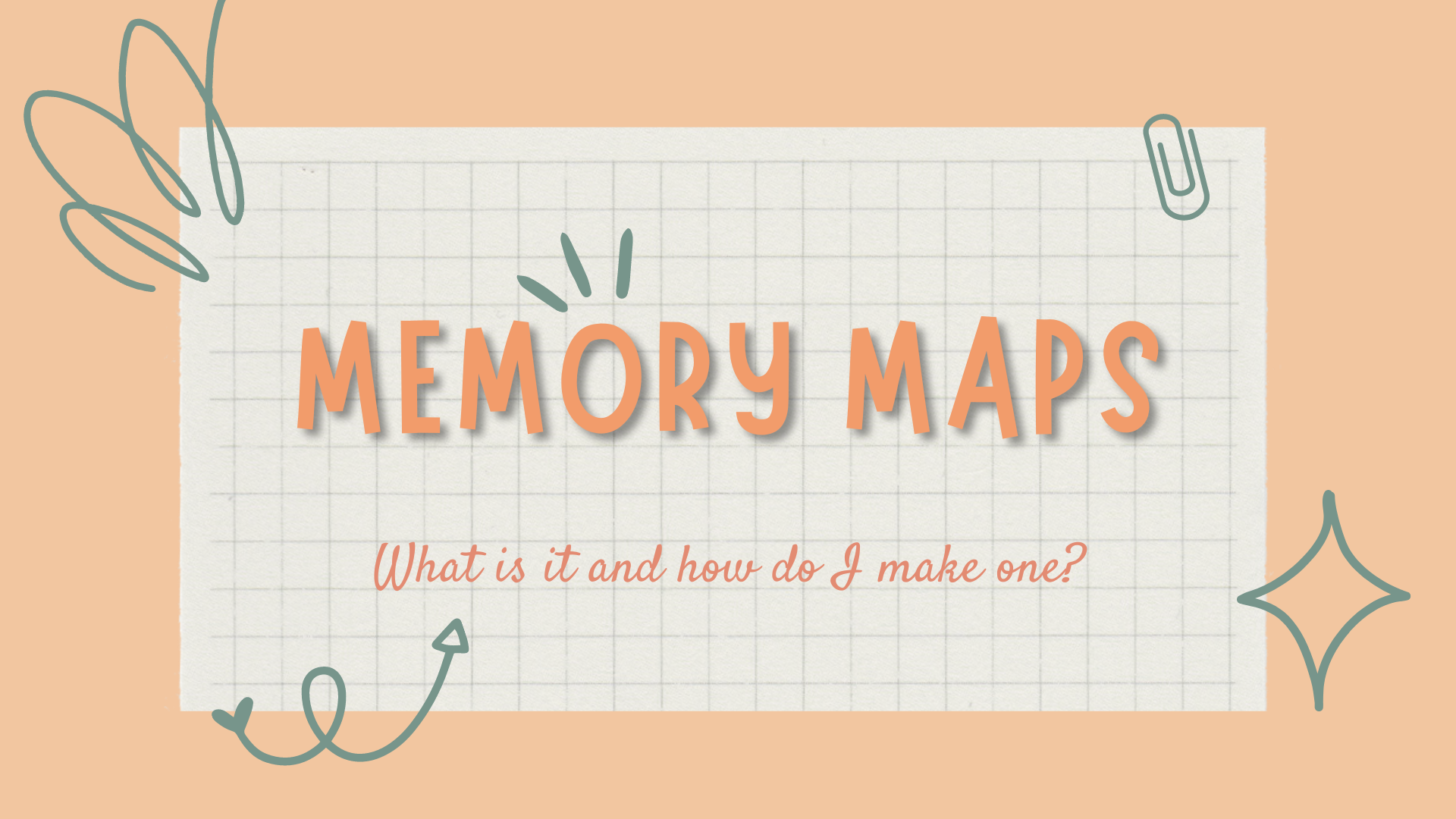This semester brought a new challenge of memorizing music to me. I had no idea where to begin and most people would tell you to do things like playing parts over and over or singing the piece in order to memorize it. But my professor, Nina Assimakopoulos, has introduced a thing called a memory map that has helped me immensely in memorizing music. To put it simply, it is the main ideas of a piece written down in order to help you memorize the music. So what does this look like and how do I make one? Here is an example of one of my memory maps:
To an onlooker, this probably doesn’t make sense, but it makes sense to me and has really helped. If I, or you, look at the map side-by-side a score, it will start to make more sense.
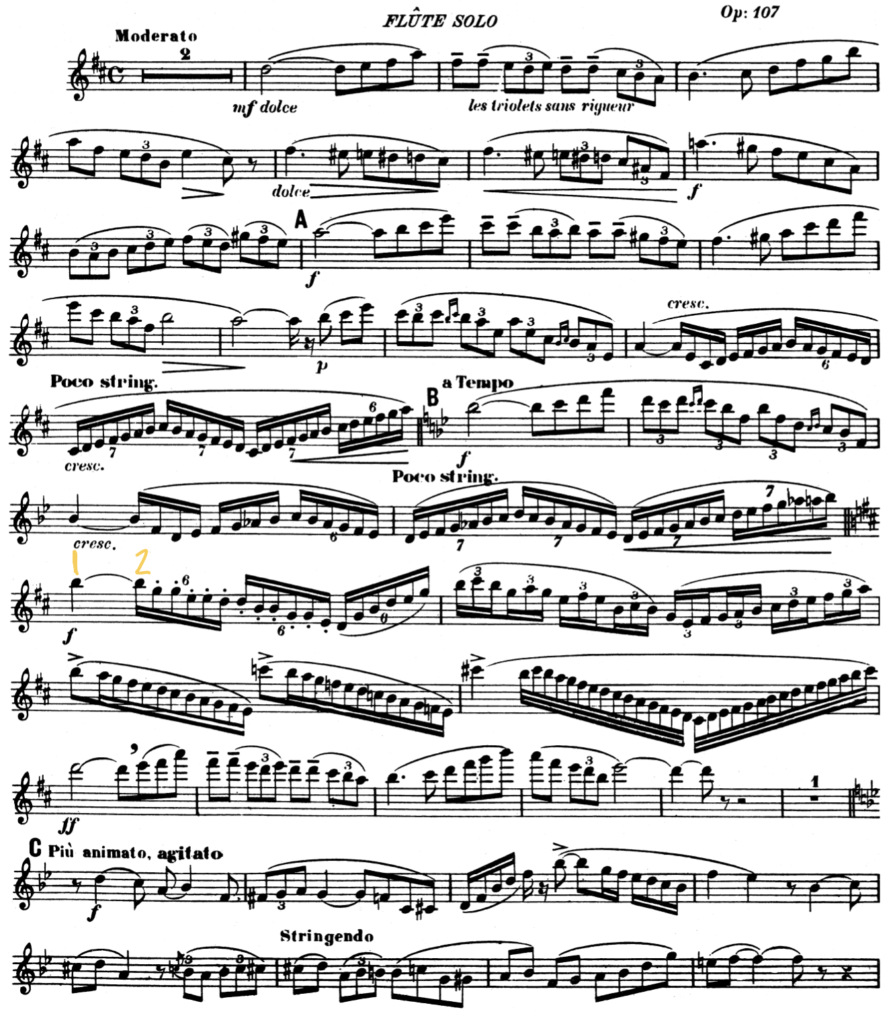
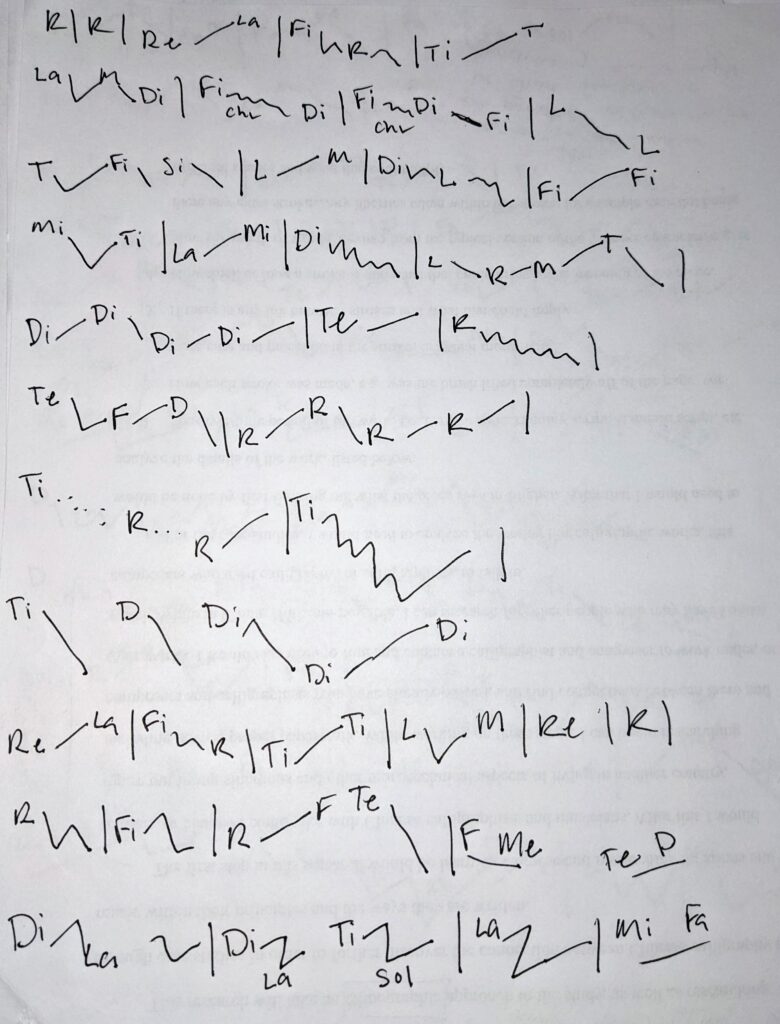
There’s a ton of different ways you can do memory maps, it’s just supposed to help you. To start a memory map, get out the score and some paper. I find it easiest to go line by line in the music to create a map. Depending on the piece, I’ll either go based more on the melody or the rhythm. When memorizing the Chaminade Concertino, I focused more on the melody, where as the one I have for Anne LaBerge’s Revamper, is more rhythm based.
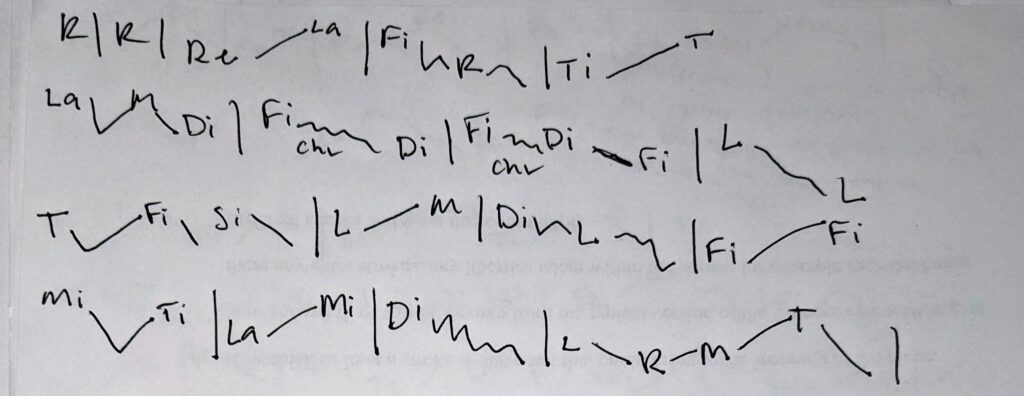
For the Chaminade memory map example above, you can see that it first starts by how many measures of rest before the flute comes in. Next you’ll want to find what your anchor notes are, this will help when you’re memorizing and needing to anchor where everything is especially if you have a memory slip. If you know that the piece starts on a D and then the next measure a F#, you’ll be set by the next measure if you forget what comes after the D. Then you have some options with how to do the melody. What I’ve done is write the solfege of the anchor notes and then some lines to guide where the melody goes. This is what I ended up liking, as my brain holds onto the solfege more like lyrics. Originally, instead of solfege, I just wrote the note name. This worked for a lot of the piece, but for me I discovered it’s easier to remember “Re” comes next and not “D”. It’s whatever helps you, and it’s okay if you change your mind like I did. You might have to just try one and see if it works, and if it doesn’t then redo it. This is what they would look like side-by-side for the Chaminade Concertino.
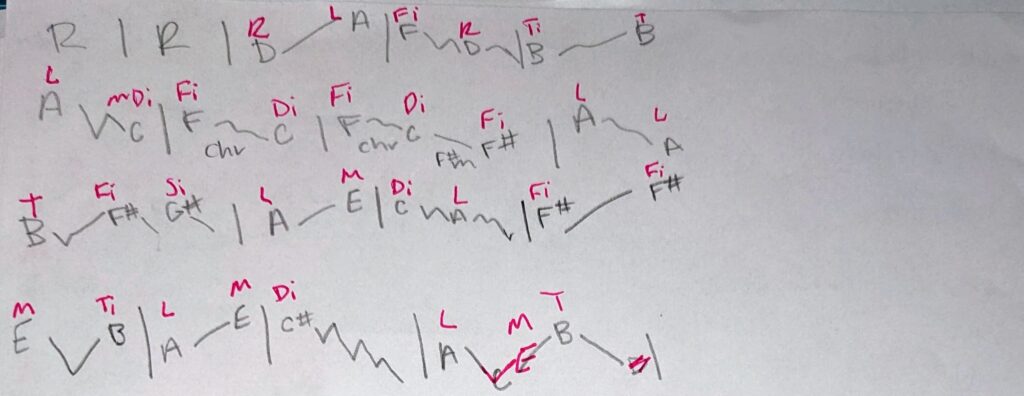
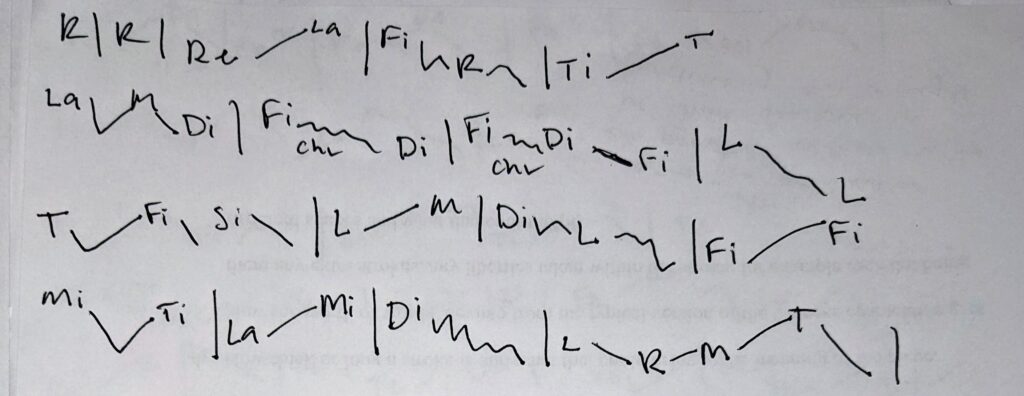
Now, the lines I have for the melody may not help you or make any sense. So what you could do instead is write the rhythm down instead of the lines. I find this to be especially helpful in measures of weird rhythms, spots where your memory slips on the rhythm, or if the piece is overall very rhythmic. This is what that would look like in the first line of the Chaminade.

And that’s basically all there is to making a memory map. Just repeat that throughout the entire piece and you have it. There are tons of ways of creating one and you may do different types of maps for different pieces. When making a map for Revamper, I focused more on the rhythms and timing instead of the notes, as a lot of the piece is the same few notes. This is what that memory map looks like:
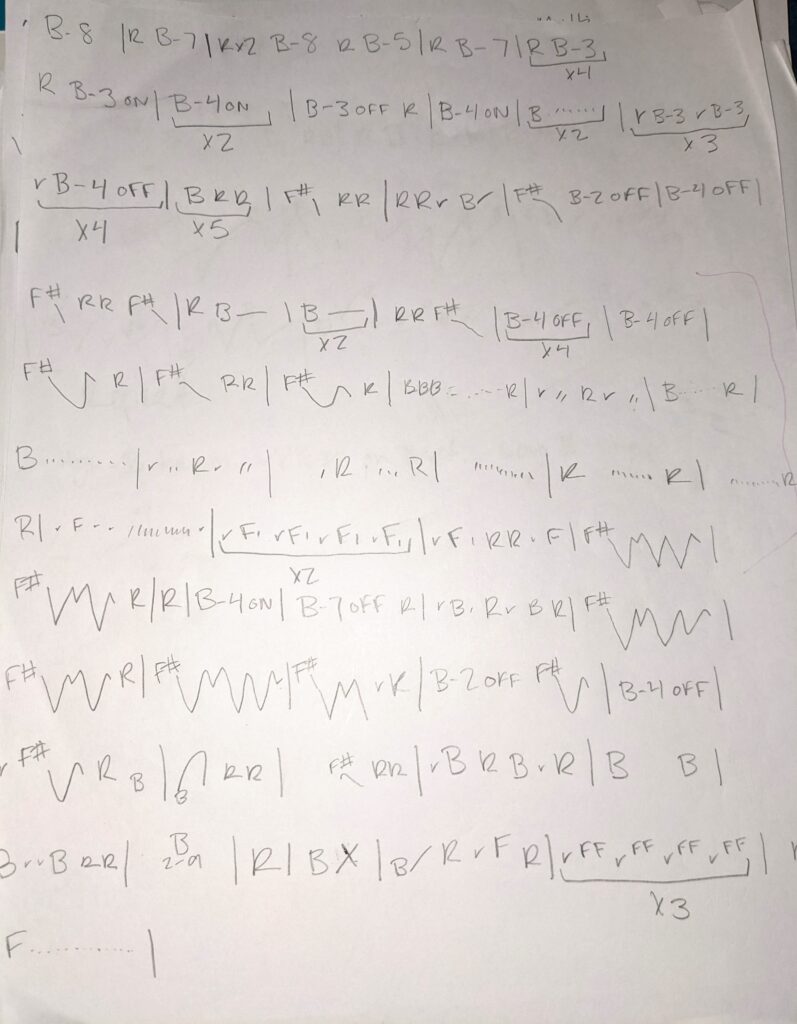
As you can see, this one looks very different from the Chaminade. I’ve chosen to write out the beginning notes more as rhythms, so I know the first B is held for 8 beats, then the next 7 and so on. Then as it goes on, I would write things like B-8 on, meaning next there’s 8 B’s on the beat and so on.

The goal with these is to basically start playing off of the memory map instead of the score itself. It’s like a training wheel for memory as the notes are not all the way there, but there is enough to get you through the piece. When practicing off of a memory map, especially for more melodic pieces, I like to go through the spots I’m struggling with and really focus on the anchor notes. As an example, in the Chaminade there’s a lot of scalular runs that can get lost, but knowing that the run starts on “La” or “A” and then goes to Ti then Di four times, helps if I were to get lost. If I was struggling I’d slow the run down and just think about those few notes, not worrying quite as much about what comes in-between and just making sure I land on the La’s and Di’s.
What I’ve used as examples are my very first memory maps, so it look a while to know what I wanted to put on there and get out of them. I’ve made a few more since to help memorize other pieces I plan to play on an upcoming recital and they combine a lot of different things. The example below is a piece originally by Tchaikovsky, but made into a flute arrangement. As you can see, I stuck with using solfege for my anchor notes, then used a combination of lines and rhythms for the melodic line. I also discovered that adding in measure numbers is a really good idea! The rhythms written out helped a lot at first, but now that I’m more memorized and comfortable, I would probably go and take out a few of those rhythms, as I know them more now and don’t really need them there, I just need a reminder of the overall shape of the piece.

That’s the basics of a memory map. It can seem kind of intimidating to do at first and definitely to look at, but it’s a really nice way to memorize music. I didn’t think memorizing music would be this possible for me, but I’ve now memorized four pieces using this. I’ve had plenty of memory slips, but when it slipped, I would stay calm and get back in where I knew the next anchor note was and usually it was soon. It gave me something to fall back on and a step closer to full memorization by playing off of a memory map. It gave me more confidence when I went to perform from memory, also playing from memory in front of people before the performance is EXTREMELY beneficial. It will allow you to truly see where your memory needs more work and from that you can adjust your memory map and figure out what works best to strengthen your memory. If you’re struggling to memorize, or looking for ways to better memorize music, I highly highly recommend giving a memory map a shot. And if you want to share how it goes with me, please do! Or if you have any other ways of memorizing music that may be helpful, leave a comment! Good luck on memorizing! You got this!!

